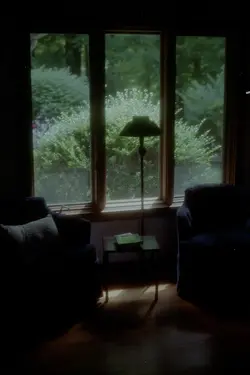Hi, new here, been experimenting with a Nikon FE for about 6 months and the results have really fluctuated between okay pictures & totally unusable pictures. I've rarely gotten a 'great' picture unless I'm shooting inanimate objects with a light kit and tri-x, and I don't know whether it's me or a fault within the camera as it is over 30 yrs old.
First off, I've had difficulty judging exposure using the electronic two-needle system in camera. It seems wonky to me. Seems maybe 95% of the time my photos come out looking 1-2 stops underexposed. I tend to shoot expired film along with new stock, and generally there's not a hell of a lot of difference in exposure and color between the new/old rolls as it all tends to come out underexposed.
So maybe I should buy a light meter and check that exposure against the FE's?
Also put two new batteries in a couple months ago...
...and I don't think it's the lab as the negatives are always perfectly developed.
Only other thing I think could be an issue is that I tend to stack filters for neat lighting effects. I know that doing this influences exposure but I've just assumed the FE's meter would compensate accordingly. Sometimes I'll overexpose by as much as 2-3 stops and still get a dull/dark image.
So I'm not sure what's going on...
...just dropped off a roll of Fuji 400 I shot at 200 and a roll of 200 with every shot overexposed by 1-4 stops just to see what happens.
Any ideas? Buy a light meter?
First off, I've had difficulty judging exposure using the electronic two-needle system in camera. It seems wonky to me. Seems maybe 95% of the time my photos come out looking 1-2 stops underexposed. I tend to shoot expired film along with new stock, and generally there's not a hell of a lot of difference in exposure and color between the new/old rolls as it all tends to come out underexposed.
So maybe I should buy a light meter and check that exposure against the FE's?
Also put two new batteries in a couple months ago...
...and I don't think it's the lab as the negatives are always perfectly developed.
Only other thing I think could be an issue is that I tend to stack filters for neat lighting effects. I know that doing this influences exposure but I've just assumed the FE's meter would compensate accordingly. Sometimes I'll overexpose by as much as 2-3 stops and still get a dull/dark image.
So I'm not sure what's going on...
...just dropped off a roll of Fuji 400 I shot at 200 and a roll of 200 with every shot overexposed by 1-4 stops just to see what happens.
Any ideas? Buy a light meter?
Attachments
Last edited:












![[No title]](/data/xfmg/thumbnail/37/37120-1d477daab99b292a0c740b50f1c96d53.jpg?1734169832)


![[No title]](/data/xfmg/thumbnail/37/37124-e3a7364a555409b3504415a982f9dfe0.jpg?1734169833)